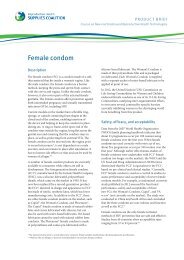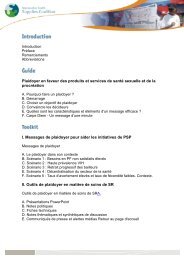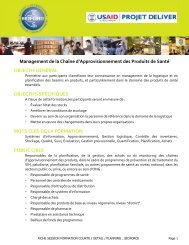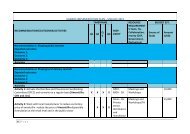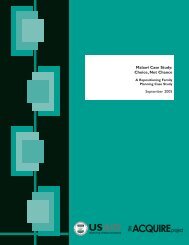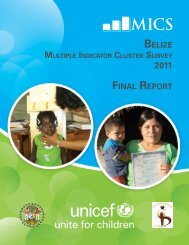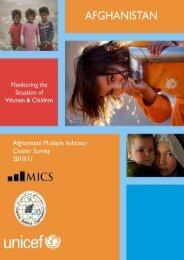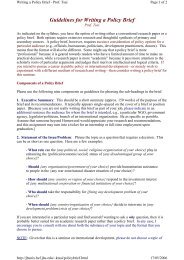EVERY WOMEN EVERY CHILD UN COMMISSION ON LIFE-âSAVING
EVERY WOMEN EVERY CHILD UN COMMISSION ON LIFE-âSAVING
EVERY WOMEN EVERY CHILD UN COMMISSION ON LIFE-âSAVING
- No tags were found...
Create successful ePaper yourself
Turn your PDF publications into a flip-book with our unique Google optimized e-Paper software.
inefficiencies and sustainability concerns, especially with the key partners indicating that some funding may cease at the end of 2012. Quality: Procurement and distribution at the public health facility level is not based on actual demand: a significant proportion of public health facilities in Uganda do not stock adequate supplies of zinc and ORS. This is largely due to Uganda’s supply system, whereby volumes of medicines are “pushed” to HC III and II based on assumed demand. This results in chronic under-‐stocking of Zinc and ORS. In the 45 districts covered by SURE, ORS was only available in 86% of HC2 and 89% of HC3 during the last quarter of 2012. For facilities that have been out of stock at least one day, the average stock out over the last 3 months lasted 15 days at HC2 and 18 days at HC31. No data is available re. Zinc Evidence/ regulatory issues: Lack of an overarching policy and conducive regulatory framework: the MOH prepared a draft Protect-‐Prevent-‐Treat (PPT) strategy, which has yet to be endorsed. Awareness/ demand Caregivers' knowledge about ORS is generally high . However, the level of knowledge about (1) the severity of risk posed by diarrhea, and (2) the use of zinc to complement ORS treatment, remain poor. For example, only 17% of caregivers had been exposed to any message about zinc/ORS – consistent with weak mass media efforts (source: SHOPS' KAP survey). This situation is reflected in caregiver behavior, in which there is lack of compliance with the recommended treatment regimens (in particular demand for zinc). In addition, a significant percentage of caregivers do not seek treatment at all (~ 14% of total), suggesting that the severity of diarrhea is not affecting their behavior. Implementation plan a) Immediate plan • Behavior Change Communication (BCC) 1. Awareness-‐raising. Strong and sustained efforts to improve caregivers’ knowledge of diarrhea treatment with zinc and ORS: Craft key communication messages, develop creative work with a specialized agency and produce material. Conduct Behavior Change Communication campaigns through mass media. Leverage the national VHT network to disseminate BCC messages and material, and further develop this opportunity through the development and utilization of a mobile phone platform to effectively communicate messages to VHTs and caregivers. • Incorporate ICCM commodities into the national supply chain through: (1) Support to MOH's on-‐going quantification effort of community-‐level demand for ORS and Zinc, including an assessment of the additional procurement cost for NMS; (2) quantification of ICCM consumption vs. facility consumption; (3) develop long term ICCM sustainability guidelines; (4) support facility-‐based VHT quality improvement collaborative meeting; (5)



